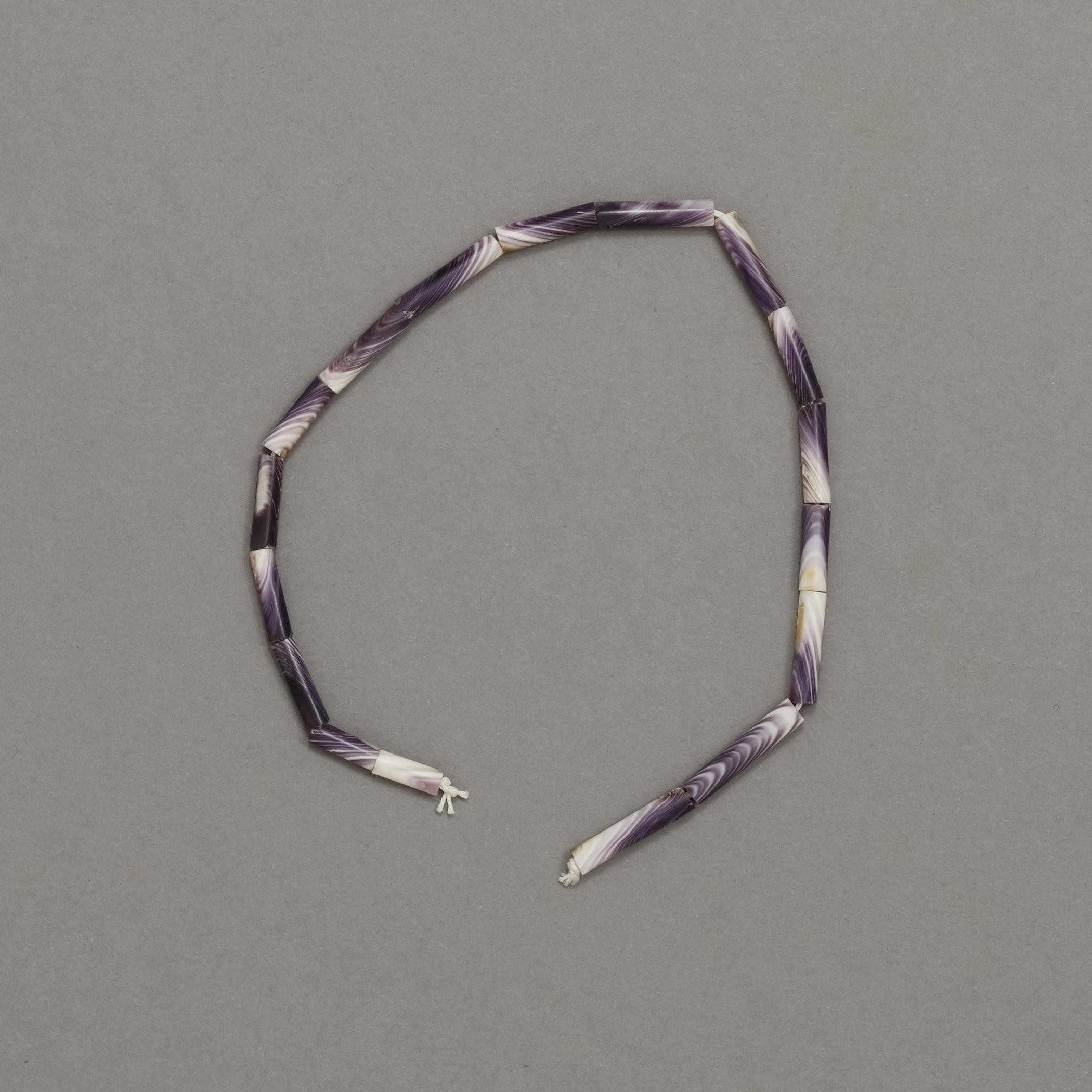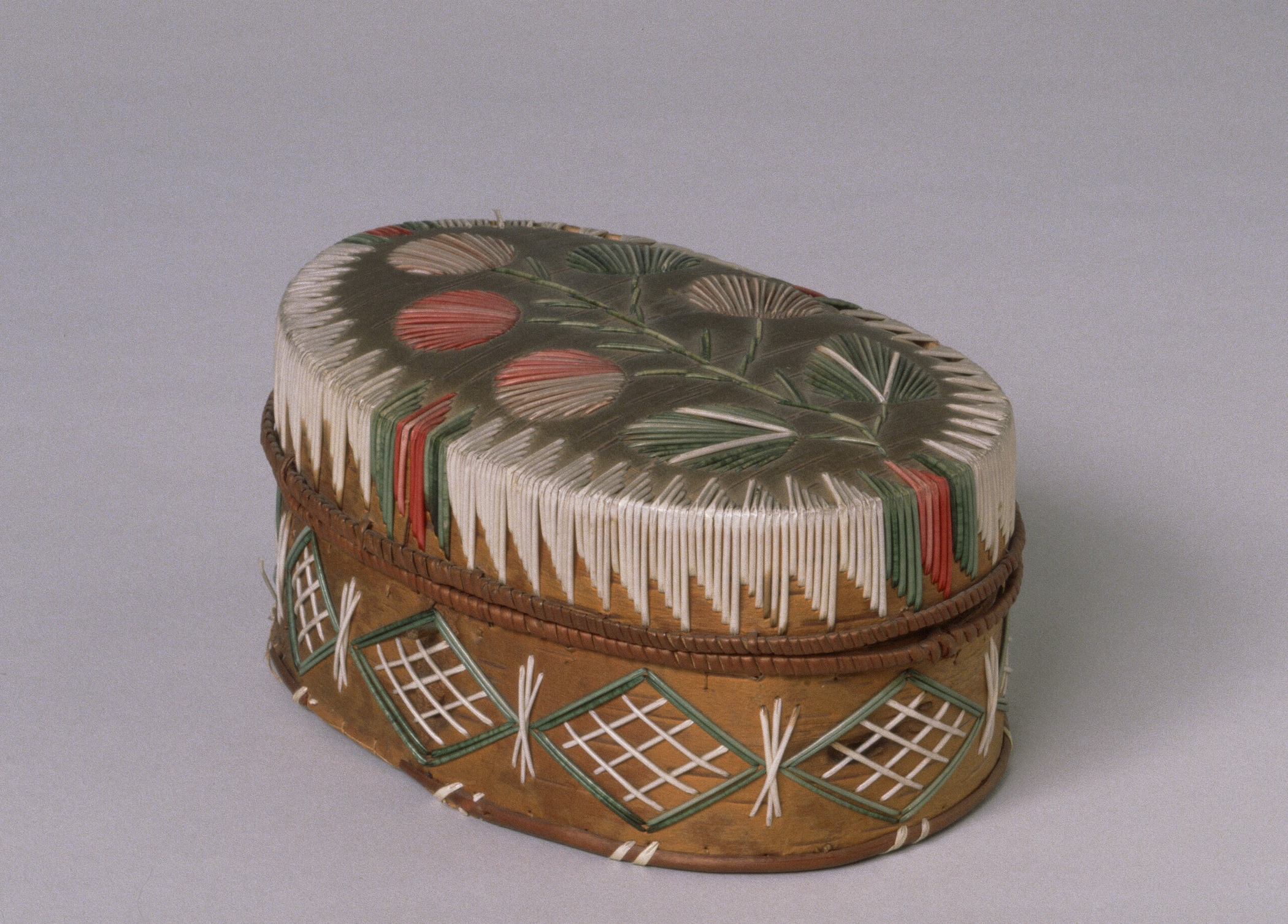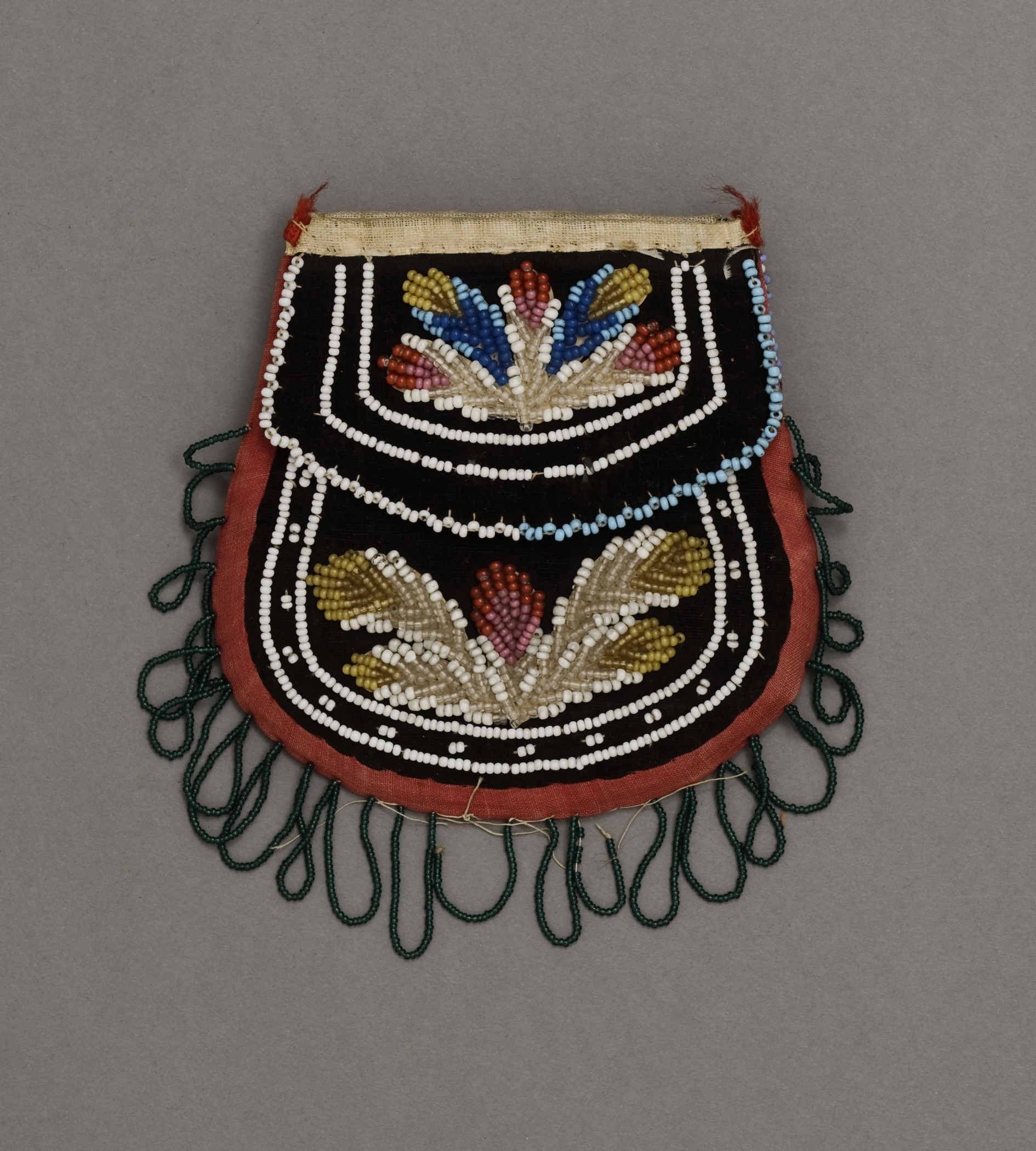Jeremy Frey, American (Passamaquoddy), born 1978
Vase basket
- 2008
- Brown ash, sweetgrass, white cedar
- 15 × 10 in.
Hood Museum of Art, Dartmouth College: Purchased through the Phyllis and Bertram Geller 1937 Memorial Fund; 2008.88. ©Jeremy Frey
visibilityLook & DiscussWoodlands groups made ash splint baskets of specific shapes and sizes to gather, store, and prepare food, both before and after European contact. After the arrival of Europeans, many tribal people used basket making as a way to make a living.
Jeremy Frey (pronounded Fray), an award-winning Passamaquoddy basket weaver from Maine, wove this basket.
Explore the object
This basket represents both innovation and continuity. Jeremy Frey used the traditional materials of Wabanaki basket weaving—ash and sweetgrass—but created a brand-new modern shape. It is more like a sculpture than a basket.
The tradition of basket weaving has continued uninterrupted for thousands of years and played an important role in native economies. In the 18th and 19th centuries, Wabanaki families traveled together to sell their baskets in Boston, New York, and Philadelphia. By the 1870s, resort hotels sprang up along the New England coastline and inland lakes. These were places where the Wabanaki traditionally had villages, and tribal people continued to return to them to hunt and fish. So it was only natural that the Wabanaki set up encampments to sell baskets, as well as other art forms, beside the new resorts. These encampments built community among Wabanaki people who might otherwise have remained dispersed.
During this era, Maine Indian baskets became extremely popular. Basket making became the primary source of income for many Wabanaki families. By the turn of the 20th century, almost every Penobscot and Passamaquoddy household was involved in basket making. Entire families worked all winter in preparation for the summer sales.
The 1930s through the 1980s were hard times for Wabanaki basket makers. Cheap, largely machine-made baskets began to flood the market. Wabanaki children were encouraged to focus on education, college, and finding steady jobs. Although it was considerably harder to make a living selling baskets, some basket makers kept weaving, in the hope of keeping the tradition alive for future generations.
The 1990s brought a resurgence of basket making in Wabanaki communities. This resurgence was due to the hard work of the weavers who kept this tradition alive, and their decision to unite. The weavers formed the Maine Indian Basketmakers Alliance (MIBA) in 1993. Offering community workshops and apprenticeship programs, as well as sales opportunities for its members, MIBA has emerged as an international success story in traditional arts preservation.
Meet the Artist
Jeremy Frey was born and raised on the Passamaquoddy tribal land of Indian Township, one of two Passamaquoddy reservations in the state of Maine. He learned to weave baskets from his mother and began weaving in earnest in his 20s. He engages in all aspects of basket making, from gathering sweetgrass to selecting the ash trees and preparing the splints. He is known for combining traditional materials with innovative new designs. His baskets have won many awards, including Best of Show at the Santa Fe Indian Market, an important event for showcasing contemporary Native American art.
Learn More
Visit the website of the Maine Indian Basketmakers Alliance for information on Wabanaki basket weavers, as well as videos of basket weaving and the history and importance of this art.
Watch Jeremy Frey and his wife, Ganessa Bryant, weave baskets and talk about their work on the YouTube channel of the Hudson Museum at the University of Maine.
Ganessa Bryant's work can also be found in a Hood Museum of Art Learning to Look lesson.





